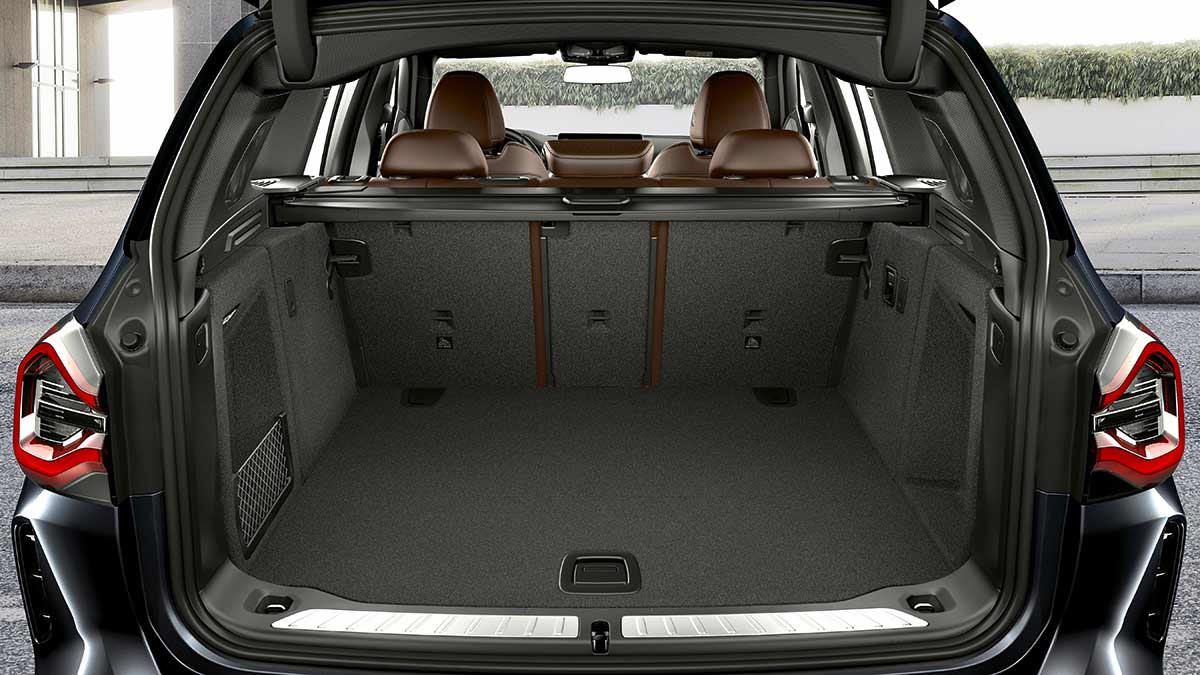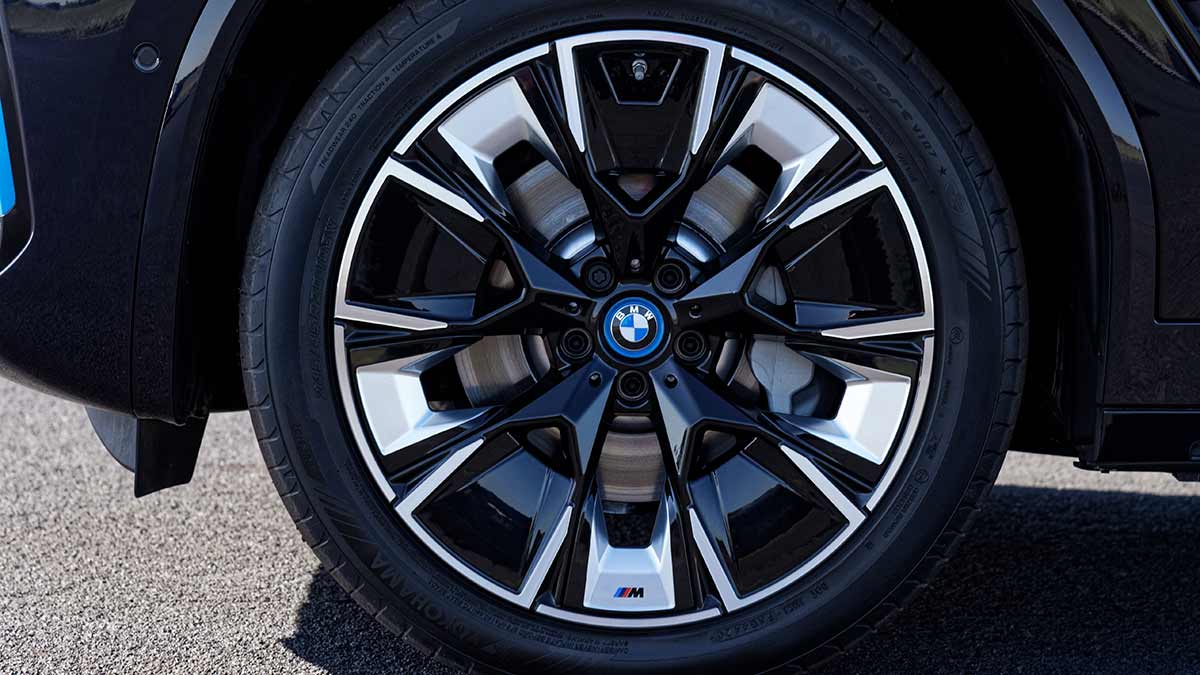The Xpeng G6 reads like a bona fide Tesla Model Y rival, but does that translate from the brochure to reality? Here we’re testing the more expensive G6 Long Range, which lives up to its name with a 570km claimed range.
2022 BMW iX3 road test review

BMW’s first fully-electric SUV caters for the conservative crowd by looking like a regular X3, mirroring the approach applied to the Mercedes EQC and Audi e-tron.
There’s a reassuring regularity to the shape of the BMW iX3 that satisfies current X3 owners who feel adventurous enough to try an electric SUV without wanting out-there styling.
This mid-sized soft-roader provides the range, responsiveness and recharge times that luxury buyers expect.
Available in only one highly specified format, the iX3 emulates the best bits of the X3 line-up in terms of interior sophistication but supplements that with a unique drivetrain.
It may not drive on a dedicated electric vehicle platform, but the overall packaging doesn’t feel compromised from either behind the driver’s seat or in the rear pews.
On this page
- How much does the BMW iX3 cost?
- How safe is it?
- What's it like inside?
- What's under the bonnet?
- Is it efficient?
- How does it drive?
- Should I buy one?
How much does the BMW iX3 cost?
Parking a BMW iX3 in the driveway will set you back $114,900 before on-road costs. That’s exactly $10,000 more than the plug-in hybrid version of the X3, the xDrive 30e, though it is worth noting the hybrid drives all four wheels while the iX3 purely powers the rear.
That rear-wheel-drive approach helps the iX3 undercut its all-wheel-drive European rivals.
Buying a comparably sized Mercedes-Benz EQC 400 is $124,300; the (larger) Audi e-tron 50 starts at $139,900 and the Jaguar i-Pace SE 400EV is $142,580 before on-road imposts.
The downside of the ownership experience is the BMW is still only covered by a three-year warranty, while the opposition have all moved to five years.
Servicing the BMW for the first four years costs $1200 for the “Basic” package which covers typical service components such as filters and fluids, or $4605 for the “Plus” pack that includes brake pads and rotors.
Given the iX3 hits the scales are more than 2200kg, there’s a good chance you may need new brakes in that period.
How safe is the BMW iX3?
The iX3 is officially not rated. ANCAP’s five-star assessment of the X3 only applies to the 20d and 30i versions that launched in 2017.
The internal combustion variants scored 93 per cent for adult occupant protection, 84 per cent for child occupant protection, 70 per cent for pedestrian protection and 58 per cent for safety assist.
The “Driving Assistant Professional” pack is standard on the electric SUV and bundles adaptive cruise control, lane-keep assist, steering assist, active lane guidance, front and rear cross-traffic alerts, a crossroads warning and speed sign recognition.
Being electric, the BMW iX3 is also fitted with an acoustic pedestrian protection sound. This system emits a sound when driving at speeds of up to 30km/h to warn pedestrians and cyclists of the iX3’s presence.
What’s the iX3 like inside?
There isn’t much to option inside this SUV. The standard gear includes a sunroof, head-up display, leather upholstery, heated and powered front seats, reclining second row seats, an automatic tailgate, interior lighting, and a 12.3-inch infotainment screen matched to a 16-speaker Harman/Kardon sound system.
Smartphone mirroring includes iPhone and Android platforms and there’s a wireless charging pad up front.
Cargo space is still a more-than-decent 510 litres, given the batteries are housed under the entire floor, rather than under the cargo area, as they are in the plug-in hybrid, which consequently only has 450 litres of space.
A tyre repair kit is as good as it gets if you puncture one of the 20-inch tyres.
What’s under the BMW iX3’s bonnet?
Not very much. The electronics are stowed under the plastic cowl but the 210kW/400Nm electric motor sits at the back of the iX3 (which is why the boot space is down by 40 litres on a regular X3).
The 80kWh battery pack is housed under the floor of the electric SUV, which helps keep a low centre of gravity, given the mass is around 500kg.
BMW claims a 6.8-second sprint to 100km/h and a top speed of 180km/h.
Is the BMW iX3 efficient?
The claimed range under the WLTP testing cycle is 460km. Owners who max out their regeneration rate (there are four levels of braking energy recovery) may come close to it, providing they’re not using the heating or air-conditioning.
A more realistic mark for typical drivers will be just under 400km. The mid-sized SUV can be recharged on a 150kW DC public charger, with BMW quoting a 10-80 per cent recharge time of 32 minutes.
Hook the iX3 up to a home Wallbox with 11kW of output and a full recharge will take a claimed 7.5 hours.
Make the mistake of plugging it into a standard 1.8kW wall socket and the car will be stationary for around 44 hours. That’ll spoil your weekend.
That’s why one of the big selling points of the iX3 is the fact it comes standard with complimentary five-year subscription to charge at Chargefox public charging stations.
That’s a lot of free and relatively fast-acquired energy.
How does the BMW iX3 drive?
There’s nothing wrong with the way a regular X3 copes in traffic or through turns. The iX3 just does it better.
The suspension would have been recalibrated to cope with the EV’s additional weight and it has improved the ride around town and on country roads.
The default “comfort” setting on the adaptive dampers has little issue with road joins or speed humps.
Flick the switch to sport and it stiffens the set-up up for flat cornering on rutted country roads.
Ultimately it starts to understeer, but even then the front end pushes wide slowly and predictably, making it easy to rein in before the stability control decides it needs to intervene.
Urban and suburban environs play to the iX3’s strengths, purely from an energy recovery perspective to extend the driving range, but I’d happily drive one of these vehicles interstate.
Should I buy one?
The price of the BMW iX3 is more compelling than its rivals and, unless you plan regular soft-roading excursions, it loses very little for not being an all-wheel-drive model.
There’s good space for four people and their luggage and the fit and finish is as good as you’d expect in the premium class (iX3 buyers can expect to be regularly told their car is made in China; counter by asking if anyone can spot the build quality difference with a standard X3).
Throw in five years of free charging and, if I was in the market for an electric SUV, I’d be having a close look.
The information provided is general advice only. Before making any decisions please consider your own circumstances and the Product Disclosure Statement and Target Market Determinations. For copies, visit racv.com.au. As distributor, RACV Insurance Services Pty Ltd AFS Licence No. 230039 receives commission for each policy sold or renewed. Product(s) issued by Insurance Manufacturers of Australia ABN 93 004 208 084 AFS Licence No. 227678.









